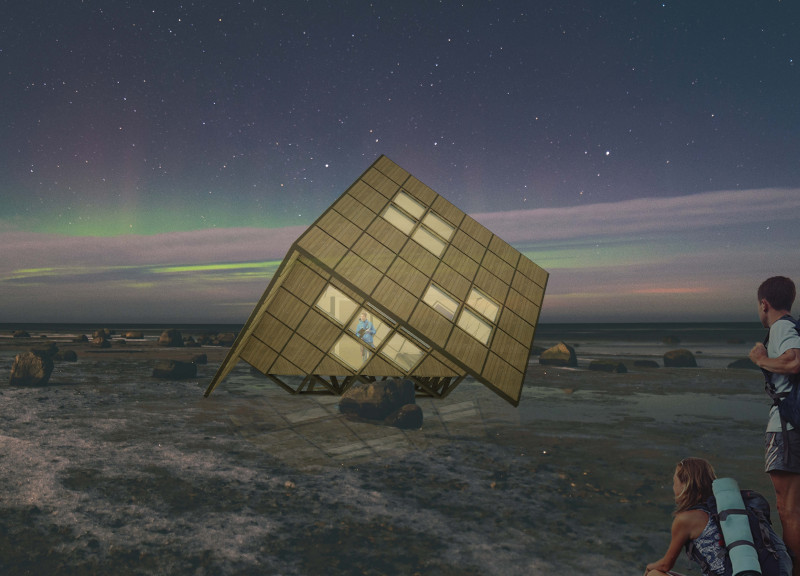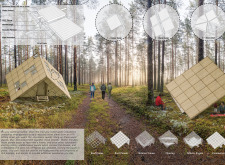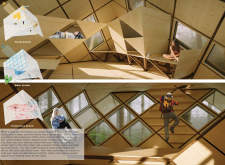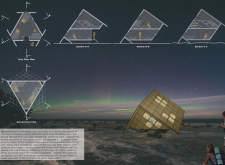5 key facts about this project
## Overview
Situated within a densely wooded area, the Apex Cabin exemplifies the integration of contemporary architectural design with its natural surroundings. Designed to meet the functional needs of its users, the cabin draws inspiration from traditional structures while incorporating modern geometric forms. The design engages the landscape, creating a distinctive silhouette characterized by a slanted facade and an asymmetric roof, which invites exploration and interaction.
## Material and Structural Strategy
The material palette of the Apex Cabin emphasizes sustainability and aesthetic cohesion with the environment. Reclaimed wood serves as the primary exterior and framing material, reinforcing the cabin's ecological focus. Complemented by recycled plywood for paneling and other interior surfaces, these choices reflect a commitment to resourcefulness. Protective water sealants enhance durability, while CPVC piping supports resilient plumbing systems. Rigid insulation incorporated in the walls and roof contributes to energy efficiency, ensuring a comfortable interior climate.
Structurally, the cabin features prefabricated panels that enable efficient assembly and adaptability in spatial organization. A tilted roof design facilitates effective rainwater drainage and optimizes sunlight exposure, while an open interior layout connects various functional zones. The design avoids traditional barriers, fostering interaction among occupants through the use of bespoke furniture that integrates seating, storage, and sleeping areas.
## Systems for Energy and Resource Management
The Apex Cabin is equipped with innovative systems aimed at enhancing its energy efficiency and self-sufficiency. Solar panels, as indicated in design sketches, are positioned to harness renewable energy. A rainwater harvesting mechanism further supports sustainable water sourcing, while passive heating and cooling elements are strategically designed to optimize airflow and natural light throughout the cabin. This integration of advanced systems underscores the project's dedication to sustainability and responsible resource management.
The juxtaposition of modern design elements with traditional building techniques, combined with large windows that encourage interaction with the surrounding forest, facilitates a connection between the interior space and the natural environment.






















































